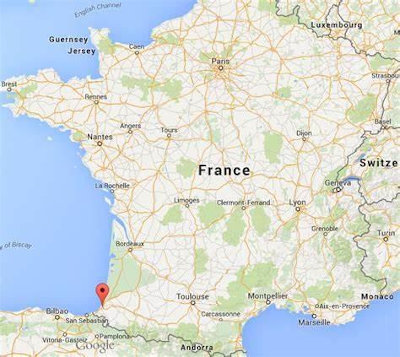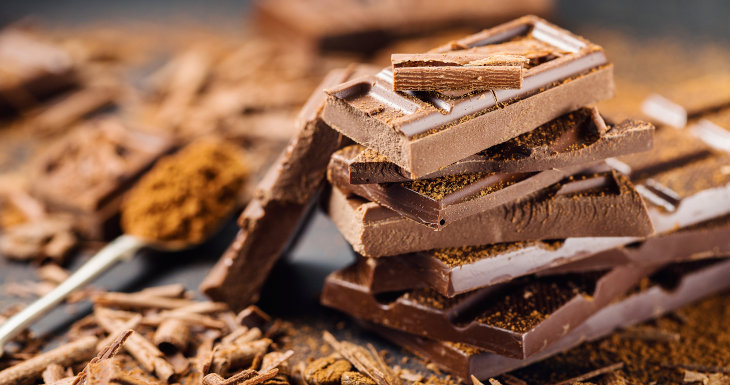 Passover’s Message of Hope in the Aftermath of Oct. 7
Passover’s Message of Hope in the Aftermath of Oct. 7


6 min read
Chocolate played a pivotal role in Jewish survival amidst the throes of the Inquisition.
We have a dizzying array of chocolate at our fingertips. From rich and velvety dark chocolate, to smooth and silky chocolate ganache, to creamy and sweet milk chocolate, and even cool and fruity ruby chocolate.

Hard to believe that chocolate used to be reserved only for the elite, out of reach to the common folk.
In 16th century Spain, chocolate was a secret, drinkable delicacy for royalty and the elite. This is reflected in a statement from the Benedictines of the time: “Do not drink the cocoa, anyone but friar, sir, or brave soldier.”
Despite only being available to the elites of society, the cocoa bean quickly amassed an incredible amount of wealth for Spain’s economy. This was due to the increasingly high demand from those who had access to it, leading to heightened trade in Latin America where the cocoa bean was grown, and the settlement in the Caribbean, where sugar for the chocolate was planted.
The development and trade of chocolate became a major industry which was largely comprised of Jews. Being a trader was originally seen as lowly profession by the upper class, so Jews were the ones who took on this work. And Jews introduced chocolate to the rest of Europe, after being forced out of Spain and bringing with them their vast trading connections and knowledge of chocolate-making.

Being a Jew in 16th century Spain was no walk in the park. The Inquisition was well under way; thousands of Jews had either been burned at the stake, forced to convert (while many secretly adhered to their Jewish identity and practice) or fled the country. Since much of Spain’s Jewish population had been involved in the “lowly work” of trade, one of the only fields eligible for Jews, many conversos, secret Jews, remained in that industry.
With a booming chocolate trade, many of these conversos or “New Christians” began to do very well for themselves. As “Christians”, their newfound access to higher social classes who desired chocolate elevated their own standing and catapulted them higher up the economic ladder.
With their knowledge of the chocolate trade, the influx of Jews proved highly beneficial to the economies of the new countries in which they settled.
However, being considered “Christian” in name didn’t protect them from the resentment and jealousies of the “Old Christians” who claimed the “New Christians” were untrustworthy, unfaithful, and a stain on the society. They still, after all, had Jewish blood.
So, after forcing thousands of Jews to convert to Christianity in order to be accepted into society, 350 years after the beginning of the Inquisition in the 15th century these secret Jews were still being hunted down or forced into exile.
Many of these Spanish Jews fled to nearby France, England, Belgium, and the Netherlands. With their knowledge of the chocolate trade, the influx of Jews proved highly beneficial to the economies of the new countries in which they settled. As these European countries were looking to get a foot in the door with trade in the New World, the incoming Jews had the trade connections they desired to compete with the Spanish.
With all their know-how, Spanish Jews developed a sweeter, edible chocolate that catered to the surrounding populations.
Bayonne, a small town in southwestern France, serves as a microcosm of what was happening across Europe. Located near the border with Spain, Bayonne became home to many Jews fleeing the country. These “New Christians” were granted residency but not citizenship (Jews were only granted citizenship after the French Revolution).

The Jews in Bayonne helped establish trade connections with the French West Indies, and established chocolate houses where it was marketed to the local community - from delicious chocolate cakes, delectable chocolate fillings, to creamy, thick hot chocolate. Chocolate was no longer to be enjoyed only by royals and the elite; it was now accessible to the masses (although still expensive), in many more consumable options. It’s no wonder that Bayonne is known as the chocolate capital of France.
But life was difficult for the Jews of Bayonne. Their success posed an issue to other French chocolatiers who were new to the scene and resented the successful Jewish tradesmen. In the 1720’s, a series of laws were passed banning Jews from making and selling chocolate in shops and warehouses, and by 1820, there were only two Jewish chocolatiers left.
In Belgium and England, the first people to be issued a license to manufacture and sell chocolate were Spanish Jews. In Belgium, Emmanuel Soares de Rinero settled in Brabant in the late 1600’s. At that time, chocolate was worth about 15 loaves of bread. Only the upper classes could enjoy this exotic treat.
But it was such a hit, and soon enough, Belgian chocolatiers began to spring up across the country. Today, Belgium has one of the highest reputations of chocolate in the world.

According to author Michael Leventhal, a man named Jacob the Jew introduced chocolate to England in 1650, a few years before de Rinero came to Belgium. He opened England’s first coffeehouse where he sold coffee and hot chocolate. England then became home to a number of chocolatiers and established themselves in the global trade of sugar and the cocoa bean.
Ironically, the chocolate trade, initially considered to be low-class work delegated for the Jews, became the vehicle for their economic success. Shunned from inclusion in government and other vocations, this phenomenon repeated itself in Jewish communities across Europe. Ubiquitous Jewish traders became the basis of many Jewish stereotypes and antisemitic tropes which remain prevalent today.
Jews were deemed as globalists, a term used to represent the greed and power used to pull the strings on the global economy. The canard that Jews were scheming to control the world led governments and political parties to scapegoat Jews for their economic downfalls and social issues and view them as disloyal to citizens.
Chocolate may not be a Jewish cuisine, but it’s embedded in the Jewish diet – from rugelach to chocolate babka, to blintzes and kosher-for-Passover chocolate cakes. For the Jews in Curacao, it is even customary to drink hot chocolate at a circumcision.
And it played a pivotal role in Jewish survival and success amidst the throes of the Inquisition.
